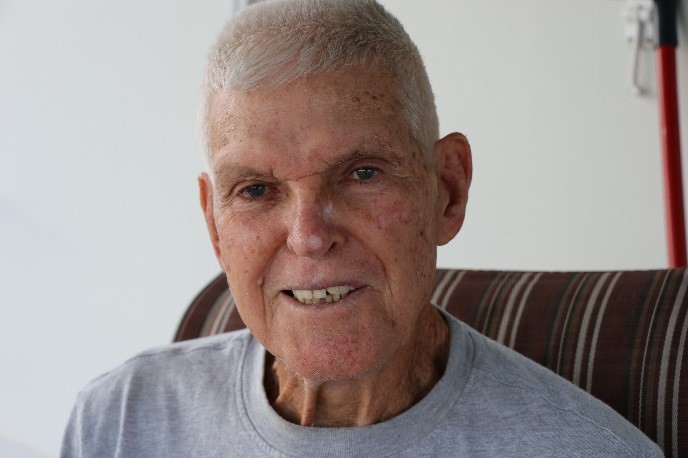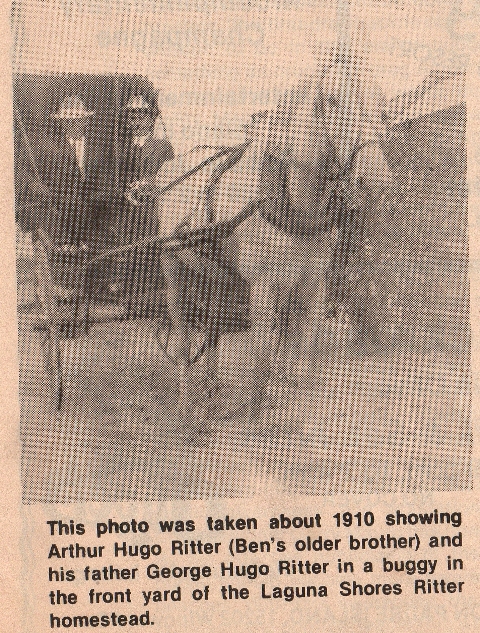[spacer height=”20px”]
[spacer height=”20px”]
To preserve the rich history of Flour Bluff, The Texas Shoreline News, will run historical pieces and personal accounts about the life and times of the people who have inhabited the Encinal Peninsula. Each edition will feature the stories gleaned from interviews held with people who remember what it was like to live and work in Flour Bluff in the old days. You won’t want to miss any of these amazing stories.
The Life and Times of Lacy Smith: Part II
Lacy Lee Smith recalls how he got his unique first name. “My mama was going to name me Travis, but she had a friend who had just had a baby and had named him Travis. So, she named me Lacy, after an uncle, I think.” Birth records for the United States indicate that only 5,1154 boys have been named Lacy since 1880. Like his name, Lacy Smith is a rarity.
Lacy’s mother, Rady Elizabeth (Jones) Smith, was born on September 11, 1909, in Marquez, Texas. His father, Rupert Allen Smith, was born on May 11, 1889, In Belton, Texas. Rady and Rupert, married on January 16, 1923, had five children: Ruby Fay in 1925, Joseph Allen in 1927, Johnny Wesley Neal in 1929, Lacy Lee Smith in 1932, and David Kent Smith in 1934. Their marriage ended in divorce, which is part of the reason for Lacy finding his way to Flour Bluff in 1936, shortly after the oil and gas boom in the area. During the Great Depression, the family fished and even worked as migrant farm workers.
“We’d travel West Texas to pick cotton and down to the valley to pick onions and potatoes. In those days, you could only sell a perfect onion or potato. We would pick black-eyed peas, too, and we lived on the culls that were left in the fields. Whatever there was to do, that’s what we’d do,” said Lacy. “Sometimes we’d pick crab meat. We’d walk along the beach in Port Isabel and dip up crabs with a net. Then, we’d build a fire and boil them and get the meat. We got a dollar a pound for crab meat because it was handpicked.”
Lacy tells of a different Flour Bluff than the one everyone knows today. “When we first moved to Flour Bluff, none of the roads were paved. They didn’t even have oyster shell on them; they were just dirt,” he recalls. “There were a few cars, mostly Model A’s, with some Chevrolets and Chryslers. We had a 1938 Ford pickup.”
At the time that, Lacy said the main way into Flour Bluff was across Ward Island. “We drove across Ward Island on an oyster shell road that went on down toward Dimmit’s Island. There were a couple of bridges on that road. Mud Bridge was out on what became Yorktown Boulevard, which didn’t go all the way to the Laguna Madre then. There were very few roads in Flour Bluff,” Lacy explained. “It wasn’t until nearly 1940 that they upgraded the roads with oyster shell. Later, they brought in caliche and gravel from Mathis. That was because of Humble Oil and then the base.” (See information below on how to read the entire story.)
_______________________________________________________________________________________________
To read this story in its entirety, please click on the Texas Shoreline News link. This will take you to the online version of the print newspaper. There you can finish reading Part II of Lacy’s story and several other articles pertaining to Flour Bluff and Padre Island. We hope you will give this new print newspaper a look. The paper comes out every 1st and 3rd Friday.
Be sure to pick up the next edition of the Texas Shoreline News to learn about Lacy Smith’s good friend and fellow Flour Bluff commercial fisherman, Bobbie Kimbrell. Print newspapers are available at all Southside Corpus Christi To read Part I of this story and access back issues of the Texas Shoreline News visit https://texasshorelinenews.com/.
The editor welcomes all corrections or additions to the stories to assist in creating a clearer picture of the past. Please contact us at [email protected] to submit or suggest a story about the early days of Flour Bluff.
Be sure to pick up the next edition of The Texas Shoreline News to learn about Lacy Smith’s good friend and fellow Flour Bluff commercial fisherman, Bobbie Kimbrell. The story will appear in The Paper Trail News in early February.
The editor welcomes all corrections or additions to the stories to assist in creating a clearer picture of the past. Please contact the editor at [email protected] to submit a story about the early days of Flour Bluff.

